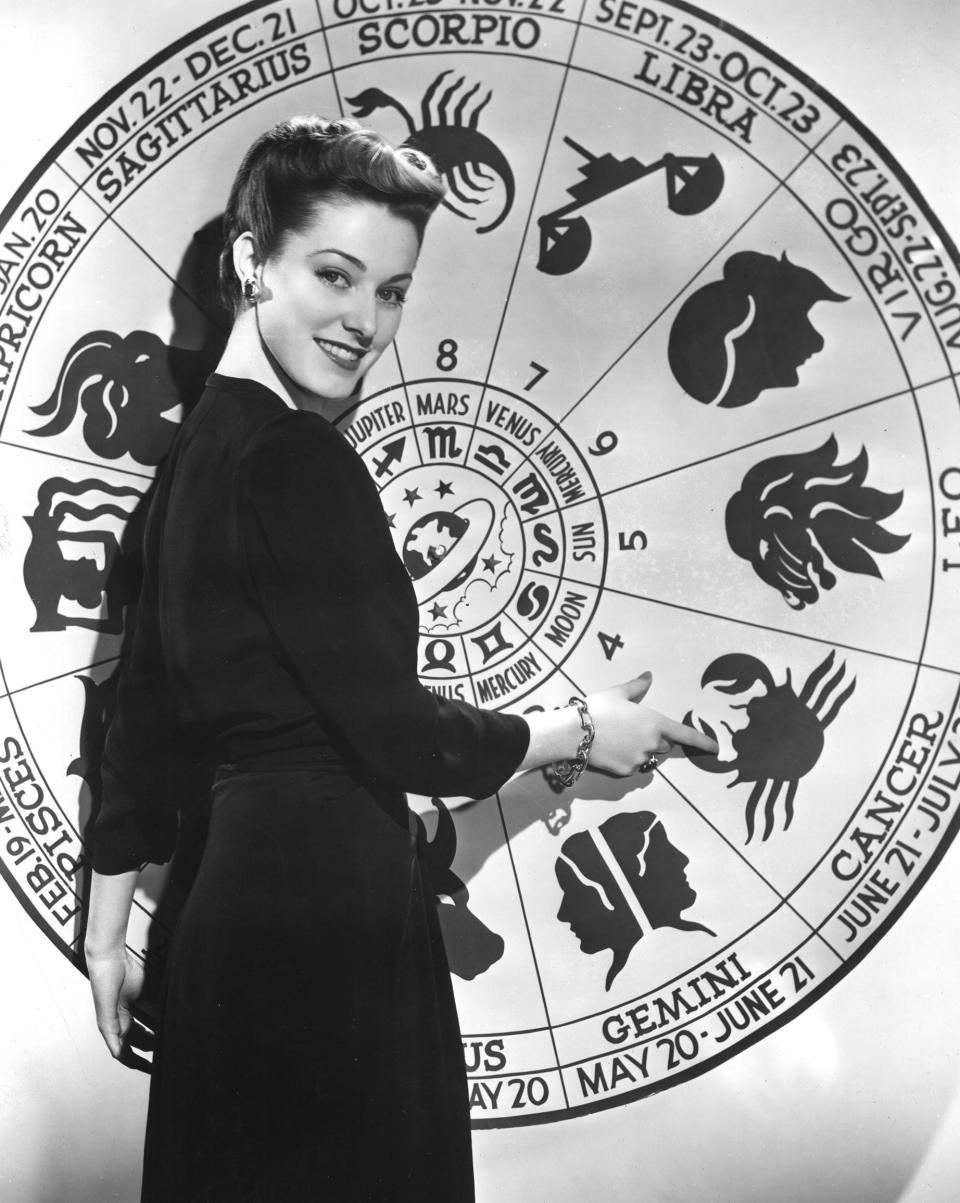Birth Charts 101: An Astrology Beginner's Guide to Understanding the Planets
Welcome, cosmic warriors. I'm Aliza Kelly Faragher, your resident astrologer, and this is Aliza's Allure Astrology, a column dedicated to astrology, esotericism, and all things magick. Today, we're getting acquainted with planetary meanings and the basics of birth charts.
The stars offer boundless insight, which these days is frequently presented through horoscopes. Our horoscopes can illuminate our daily experiences and help us recognize how the planets' movements — such as Saturn's transition into Capricorn — trigger massive, life-changing transformation. But let's take a step back: How does this process of interpreting the locations and motions of the planets even work? What is the definition of a zodiac sign, and how are the signs impacted by the planets?
These questions are fundamental to learning the basics of reading your birth chart, which reveals the location of the planets in the sky at the time of your birth. An analysis of this chart, also called a natal chart, can provide deep insight into your personality, motivations, and desires. Let's take a look at how the art of astrology and the craft of reading birth charts formed, and how you can apply it too.
What does astrology have to do with the stars?
Humans have stargazed since the dawn of time. Over thousands of years, our prehistoric ancestors tracked awesome phenomena such as eclipses and short-range comets, as well as frequent cyclical patterns. Distinctive twinkling star clusters were deemed "constellations," while fixed, celestial bodies were identified as "planets." Underneath the calm of the velvety night sky, the moon, Mercury, Venus, Mars, Jupiter, and Saturn — known as the "classical planets" — were discovered.
The ancient Babylonians created the zodiac by dividing the sky into twelve sections, each named after the largest constellation it contained. The zodiac calendar both tracked time and provided predictions: The Babylonians observed that the movement of planets, called transits, corresponded with both auspicious events and misfortunes on earth. The Romans adopted the zodiac at the dawn of the first century, expanding the roles of the stars and planets through mythology. It was at that intersection of meticulous observation and epic folklore that astrology was born.
For centuries, astrology was at the heart of science, medicine, philosophy, and magick. The Hermetic axiom "as above, so below" signified the belief that the vast, mysterious macrocosm of the universe reflects the microcosm of humans' experiences. The advent of the telescope and corresponding discovery of the so-called "modern planets" — Uranus, Neptune, and Pluto — completed the celestial puzzle. Though the function of astrology has changed (it's now more frequently used to gauge romantic compatibility than to predict the fate of the harvest), today we still observe the planets as the ancient Babylonians did.
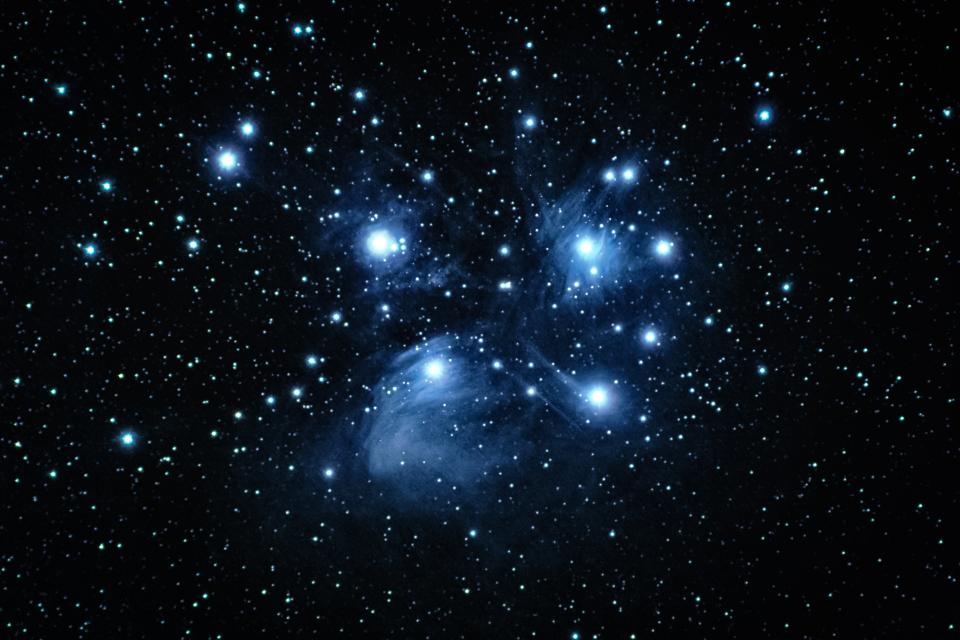
Picture of Messier 45, the pleiades star cluster
Getty ImagesWhat do the planets symbolize?
Though astrology is a vast, complex, and highly specialized study, the core principles are straightforward: A birth chart is a snapshot of the sky at the moment of your birth (you can calculate yours here). It reveals the precise location of each of the planets and which constellation they occupied. In some birth charts, all the planets are in the same constellation; in others, they're spread across the sky. The distance between these planets is important since each has its own celestial function. Let's take a look at each significant entity in the sky.
The Sun
When someone asks you what your sign is, whether or not they know it, they're asking about the position of the sun at your moment of birth. The sun symbolizes our fundamental essence. This vibrant celestial body represents our ego, sense of self, basic personality, and general preferences. (You can read more about what your sun sign says about you right here.) The sun governs the zodiac sign Leo, the vivacious, dynamic fire sign that exudes both bravery and theatricality. It takes approximately one month to transit — or move across — a zodiac sign.
The Moon
The moon's gravitational pull regulates the climate and oceanic tides. Within astrology, the moon represents our emotional inner world. While the sun exposes our outer experience, the moon symbolizes everything beneath the surface. It represents the spiritual retreat of our most private selves. The moon governs the zodiac sign Cancer, the sensitive, protective water sign that defines nurture, comfort, and security. The moon is the fastest moving celestial body in the sky and takes approximately two and a half days to transit a zodiac sign.
Mercury
The smallest and innermost planet of the solar system, Mercury is named after the Roman deity who served as a messenger to the gods. Within astrology, Mercury symbolizes communication. While the moon reflects our emotions, Mercury reflects logic and rationality. Mercury uses its clever intellect and relentless curiosity to analyze, sort, and classify, helping us synthesize and articulate complex ideas. Mercury governs both air sign Gemini and earth sign Virgo, each representing a different side of Mercury’s expression: Gemini is output, while Virgo is input. Mercury takes 13 or 14 days to transit a zodiac sign and goes retrograde three or four times per year.
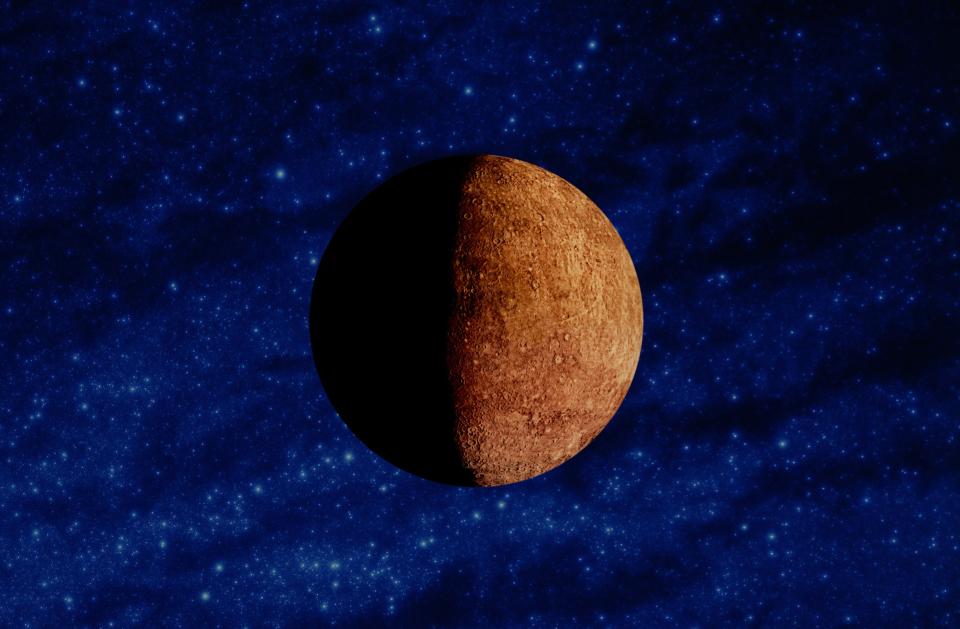
Close-up depiction of the planet Mercury
Getty ImagesVenus
Named after the enchanting Roman goddess, Venus is the vibrant planet that represents beauty, love, and money. Known in traditional astrology as a "benefic" (Jupiter is the other benefic), Venus boasts an auspicious influence. Indulgent Venus is happiest when luxuriating: Fine wines, extended baths, and aromatic moisturizers align with the Venusian spirit. Venus's highbrow tastes reflect our interest in art and culture, while its romantic sensibilities reveal our idealized perception of love. Both earth sign Taurus and air sign Libra are ruled by Venus, each representing a different side of Venus's expression: Taurus is physical, while Libra is cerebral. Venus takes approximately four to five weeks to transit a zodiac sign and goes retrograde every 18 months.
Mars
The Red Planet is known for its battle cry. Named after the Roman god of war, Mars symbolizes action, determination, and aggression. Its impassioned spirit often manifests when we're racing to meet a deadline, running to catch a flight, or competing for a selective position. Mars is the fire under our ass, providing the adrenaline-charged boost of energy that fuels movement. It also reflects our physical passion and lust. This planet governs Aries, the impulsive fire sign known for its high-octane vivacity. Mars takes approximately six to seven weeks to transit a zodiac sign and goes retrograde every two years.
Jupiter
The largest planet in the solar system, Jupiter — or Zeus, in Greek mythology — is recognized for its colossal presence. Referred to as the "Great Benefic" in traditional astrology, Jupiter symbolizes fortune, philosophy, abundance, and spirituality. This generous planet governs expansion, encouraging us to widen our scope and broaden our horizons through philosophy, spirituality, and education. Jupiter governs Sagittarius, the adventurous fire sign known for its thrill-seeking disposition. Jupiter takes approximately 12 to 13 months to transit a zodiac sign and goes retrograde each year for around 120 days.
Saturn
The ringed gas giant is associated with time, regulations, and restriction. On a good day, Saturn symbolizes hard work, professional achievements, and steadfast resilience. On a bad day, however, Saturn can be harsh and unemotional, forcing us to learn through tough love and difficult challenges. Though this planet has an odd way of showing its affection, Saturn does have our best interest in mind. It simply wants us to play by the rules. Saturn governs Capricorn, the enterprising earth sign known for its tireless ambition, and takes approximately two and a half years to transit each sign. It goes retrograde each year for around 140 days.
Uranus
Uranus is unusual: It’s the first planet discovered by a telescope, the only celestial body named after a Greek deity, and is tilted so far on its axis that it essentially orbits the sun on its side. Fittingly, Uranus symbolizes technology, rebellion, and innovation. This revolutionary planet hates the rules and is always eager to facilitate groundbreaking, dynamic change. Uranus can have surprising effects (after all, the planet loves shock value). It governs Aquarius, the free-thinking air sign recognized for its eccentricity and nonconformity. Uranus takes approximately seven years to transit each sign and goes retrograde each year for around 150 days.
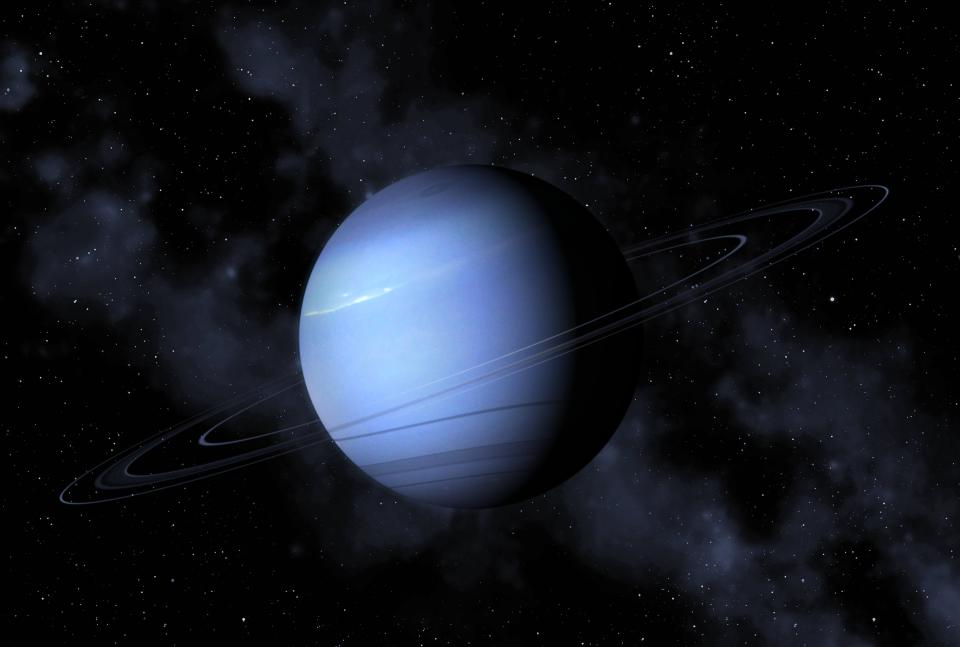
Close-up depiction of the planet Neptune
Neptune
Neptune's vivid azure color perfectly complements its astrological significance. Named after the Roman god of the sea, Neptune governs the magical, mysterious vastness of the spiritual unknown. When a thick fog rolls across the ocean, it's difficult to discern the separation between the water and the sky. Similarly, Neptune's power exists at the intersection of fantasy and reality. On a good day, Neptunian energy is extremely creative and powerfully psychic. On a bad day, however, Neptune can become delusional and escapist. When Neptune's influence is felt, explore your imagination, but remember to throw down an anchor: You never want to get lost at sea. Neptune governs Pisces, the intuitive water sign recognized for its incredible imagination and psychic powers. The planet takes approximately 14 years to transit each sign and goes retrograde each year for around 150 days.
Pluto
Though this icy celestial body didn't to measure up to the astronomical definition of a planet, by astrological standards, Pluto is still a really big deal. Pluto symbolizes power, transformation, destruction, and regeneration. Named after the Roman god of the underworld ("Hades," in Greek mythology), Pluto's power is rooted in darkness. This beguiling planet seamlessly slithers into complex infrastructures, quietly transforming systems from the inside. Pluto reminds us that in order for us to manifest change, we must release the past. It is associated with Scorpio, the elusive water sign defined by its mysterious disposition. Pluto takes approximately 14 to 30 years to transit each sign and goes retrograde each year for around 185 days.
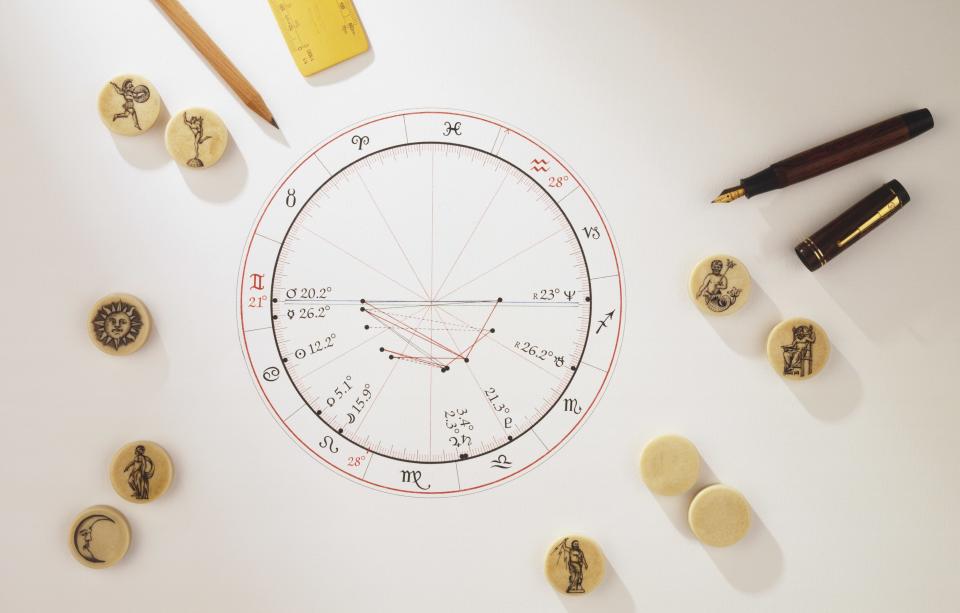
An astrological chart surrounded by zodiac sign discs
Getty ImagesHow do I put this all together and start interpreting birth charts?
Learning about the planets in relation to the zodiac is a critical step in beginning your journey into the stars. The planets with short orbits move across the zodiac frequently and are specific to an individual's date and time of birth. Referred to as the inner planets, they include the sun, moon, Mercury, Venus, and Mars, and they directly impact our unique personalities and day-to-day experiences.
The planets on the other side of the asteroid belt are referred to as the outer planets. These celestial bodies — Jupiter, Saturn, Uranus, Neptune, and Pluto — move much more slowly, changing signs every one to thirty years. The outer planets define larger life themes, as well as experiences shared by generations.
The significance of the outer planets in a birth chart is determined by the houses they occupy. A birth chart is divided into twelve sections referred to as houses. Each house represents an area of life: Houses one through six address everyday activities and mundane matters such as personal finances, the home, and routines; houses seven through 12 relate to more abstract concepts, including philosophy, legacy, and psychic abilities. The placement of the planets in the houses reveals where we store our energy, as well as our strengths and weaknesses.
Examine your own chart, and consider the planets and their corresponding signs and houses. How is a planet's function influenced by its zodiac sign, and which area of life does it impact most directly? From here, your unique interpretation of a birth chart should follow this formula: Planet + Sign + House = Interpretation
For instance, if your natal moon is in sensitive Cancer in the seventh house, the house that represents committed partnerships, your emotional happiness may be very connected to your relationships. If your natal Mars is in pragmatic Virgo in the eleventh house, the house related to humanitarianism, you may be motivated to help others in very practical ways.
The unique placement of the planets in the houses is determined by your rising sign, also known as your ascendant. This is the zodiac sign that was on the eastern horizon at the exact moment of your birth. Your rising sign creates the entire architecture of your birth chart and defines your planetary chart ruler, the planet associated with your chart (to calculate yours, identify your rising sign and then which planet governs that zodiac sign). This rising sign also defines our external experience: If your sun sign writes the speech, your rising sign is how the speech is delivered. As astrologers describe it, it's the "mask worn in public." It reveals how you're perceived by others and how you interface with the world.
Whether your goal is to become a professional astrologer or simply make sense of your birth chart, understanding the planets, signs, and houses can expose the complex depths of astrological wisdom. Spend lots of time with your birth chart: Your ability to interpret the placements in it will be strengthened as you apply the chart to your everyday life. Don't be afraid to create narratives and make bold observations. After all, that is how the solar system was discovered.
At the core of astrology, cosmic warrior, is the enduring belief that the human spirit mirrors the universe: Both are beautifully diverse and infinitely mysterious. And ultimately, astrology is the art of stargazing. Your curiosities will always illuminate the darkness.
—————
Read more stories on astrology and the occult:
How to Read Tarot Cards: A Beginner's Guide to Understanding Their Meanings
Each Zodiac Sign's Unique Personality, Explained by an Astrologer
—————
I have the scoop on which sign your sign should date right here:
